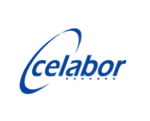NitraSorb
Textile based adsorbents for the removal of nitrate from drinking water
Rising incidents of excessive nitrate content in water bodies is an increasing concern in the EU as well as around the world. For over a decade, nitrate concentrations have exceeded the trigger value of 50 milligrams per liter at nearly one-fifth of the 1200 groundwater sampling sites in Germany. In Wallonia, concentrations above 50 mg NO3-1 appear in less than 10 % of the monitored sites. The rise in nitrate levels can be attributed to various forms of human activities, in particular the extensive use of fertilizers in agriculture, resulting in high nitrate pollution of soil and surface water supplies. It is also sometimes due to discharges of domestic wastewater.
As a result, nitrate accumulates in groundwater and surface water. Similar to other nitrogen compounds, elevated nitrate concentrations in surface waters may have a negative impact on the ecosystem due to eutrophication. In addition, nitrate-contaminated drinking water is harmful to humans, especially newborns, and is suspected to increase the risk of cancer.
Concerning the health aspect, it is of great importance to control the nitrate content in drinking water. Water distribution companies already take measures, both preventative and reactive, to reduce the nitrate levels in drinking water. Preventatively, water suppliers attempt to limit the number of pollutants, and thus nitrate, that gets into raw water in the first place. Reactively, they treat the drinking water to ensure it is below the trigger value of 50 mg/L. In the medium to long term, high nitrate levels lead to cost increases in the drinking water supply, which also have an indirect effect on water prices for consumers. A report by the German Association of Energy and Water Industries (BDEW) estimates that, water prices will rise by up to 62 %regionally in the future, mainly as a required to remove nitrate from drinking water. However, there are currently no practicable technologies available to solve the problem directly and remove nitrate from groundwater. The state-of-the-art technologies available for nitrate removal such as ion exchange, reverse osmosis and biological denitrification. However, the above-mentioned methods have their limitations as some of them are found to be expensive, less effective and producing additional by-products. Alternatively, the adsorption method is generally considered better in water treatment regarding its efficiency, ease of operation and simplicity of design. At the same time, the selection of a suitable adsorbent for effective nitrate removal is a complex task since it depends on multiple factors including the range of initial nitrate concentrations, other competing ions and their concentration in water, adjustment of pH, proper operation and maintenance etc. The objective of this NITRASORP research project is to develop and study the feasibility of a reusable surface-modified textile filter for nitrate removal so that it could contribute as a sustainable approach to reduce the impact of nitrate on the environment and human health. As a result, the filter will be prepared to be effectively capable of adsorbing nitrate at neutral pH condition and it can be reused and reactivated multiple times at large scale volume. This research will answer questions regarding the development of a reusable surface-modified textile filter in nitrate removal, and its feasibility to serve as a cost-effective approach to extend the existing water treatment technology.
Information on the research project:
Title: Textile based adsorbents for the removal of nitrate from drinking water
Password: NitraSorb
IGF-Projekt-Nr.: 336 EN
Duration: 01.05.2022 – 31.04.2024
Weitere Informationen zum Download:


